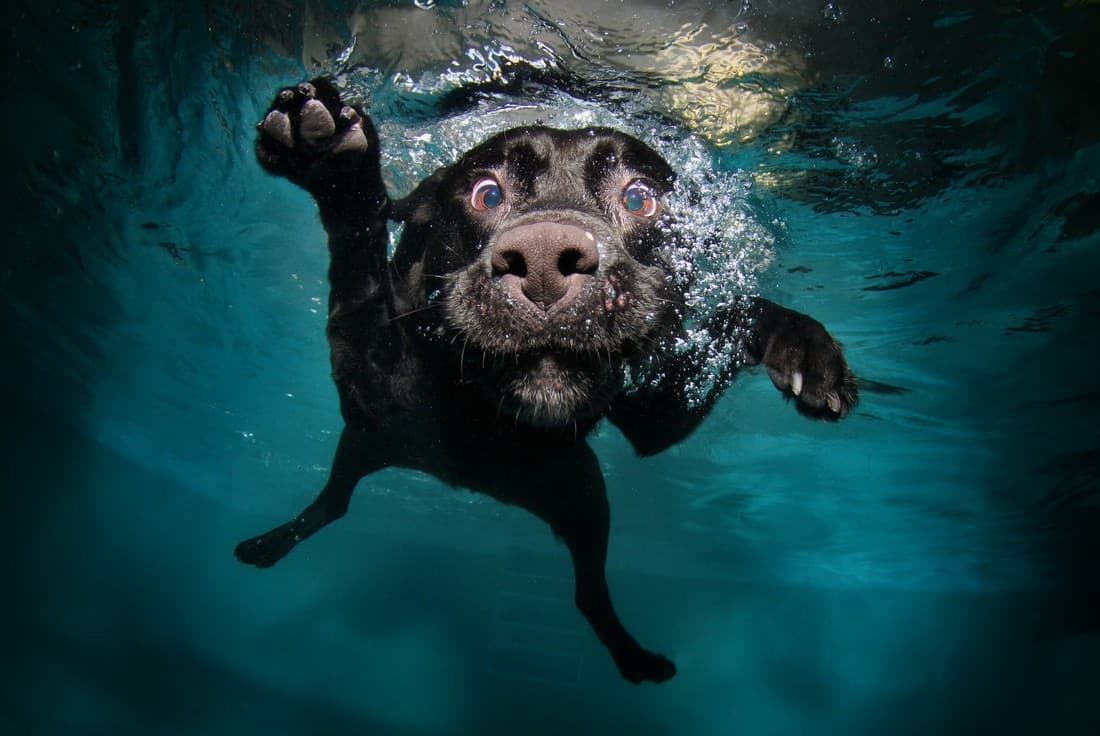Teaching your dog to swim is one of the most crucial skills he can learn. Teaching your dog to love the water while he’s young has benefits besides safety. Swimming can be a safe aerobic exercise for dogs with arthritis, those with joint or spine issues, or dogs that are overweight. In these situations, water takes pressure off the joints which reduces pain while allowing them to burn calories. Swimming also allows dogs to burn off excess energy. It is such great exercise that owners of performance dogs (those competing in agility, flyball, herding, frisbee, tracking and obedience) often use swimming to keep their dogs in top physical condition. When teaching your dog to swim, a few simple rules can make for a lifetime of fun.
– NEVER EVER leave your dog unsupervised around the water! Install a pool fence or safety alarm, and make sure your dog knows where the steps or ramp are located. You can even place a large vertical marker, such as a plant or a flag, by the steps or ramp to help your dog orient himself.
– Teach your dog to find the steps by gently placing him in the water with his feet on the top step and saying “steps” while he gains his footing. Then, take him a short distance away and let him swim to the steps, gradually increasing the distance. Stay in the shallow end, and keep the lessons short – no more than ten minutes. Dogs can’t tread water like humans and will tire quickly, unable to rest with their feet on the bottom.
– Dogs need to get used to wearing a life vest so they don’t panic in an emergency situation. Give your pup plenty of time to figure out how his life vest works so he’s comfortable wearing it in the water.
– During your lessons, maintain control of your dog by using a leash or long line attached to his dog life jacket.
– If you swim in lakes or other natural bodies of water, vaccinate your dog against Giardia, which can cause vomiting and diarrhea and can be passed along to you.
– Avoid water with a strong current, and stay away from boating and fishing areas where underwater hazards are more likely. Also be aware of stumps or rocks hidden in the water that your dog could land on when jumping.
– Avoid swimming in water over your own head. A panicked pooch may try to “climb aboard” and push you under.
– Dogs can get sunburned, too – especially around the nose and ears, so talk to your veterinarian about sunscreen made for pets, and give your dog plenty of time in the shade.
– Food stays in your dog’s stomach longer than in yours. To prevent bloat, wait 1 ½ to 2 hours after eating before taking a swim.- Know pet first aid and brush up on your skills regularly.
– Keep the directions to the nearest emergency veterinarian on hand – just in case!
Source: https://www.gopetfriendly.com/

